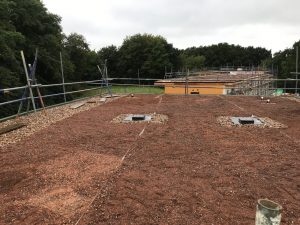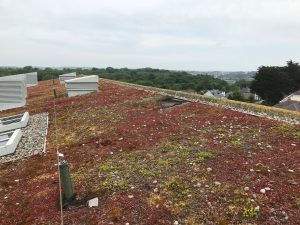TUGC has just completed the installation of plug planted green roofs across three blocks of quality passivhaus dwellings in Colchester, Essex. Providing 23 new homes, a mixture of one and two bed flats and 17 houses.

Preparing the green roofs for green roofs for installation.
We installed 800 sq.m. of green space running across the three buildings. Including an 80-120 mm build-up of substrate and 10,000 plug plants to offer broad biodiversity, as well as helping to provide sustainable drainage (SuDs).

Green roof base layers are being set out.
The Jerram Falkus construction includes the refurbishment of a listed Mill. This will become a shared space for social, domestic activities, and community events. The design team is led by Anne Thorne, an award winning eco-architect.

Substrate installed and the roof is ready for planting.
The buildings are designed and built to Passivhaus standards to achieve exceptionally low running costs, sustainable comfort and health.

Some of the 10,000 plug plants sitting waiting to be planted to complete the job.






